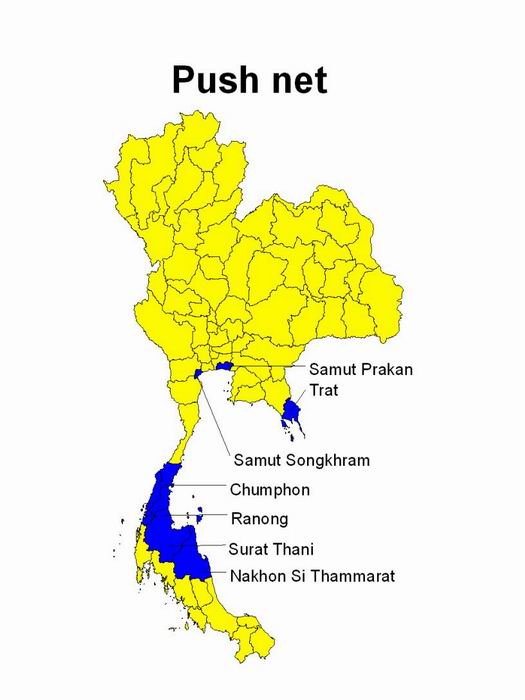Push
net
The
net of this gear has three distinct parts: the upper and
the lower part, and the cod-end. There is a ground-rope,
which is either a chain or some rope weighted with sinkers,
so that it touches the sea bottom during fishing operation. The
ends of the ground rope are fastened to the poles, which
hold the net. The head rope hangs along the length
of the poles.
The
poles are either bamboo or trunks of pine trees or iron pipe,
6-40 meters long, depending on the size of gear and the scale
of fishing. Two poles are tied so as to form on inverted
V-shape, ending in wooden or iron skis or stainless steel
which slide along the sea bed. Floats are also attached
near the skis to prevent them from getting stuck in the mud. On
large-sized gears, the floats are adjustable by means of
a rope and a ring fixed to the pole. Very long poles
are often not tied to each other but are fastened directly
to an outrigger or a boom on the foredeck of the fishing
boat.
Push-net
fishing is operated from an engine-driven boat, either in
the day-time or at night. When the boat arrives at
the fishing ground, the net is tied to the poles, with the
ground-rope and head-rope in position. The gear is
lowered in the water and floats adjusted until the skis touch
the bottom. At the end of a fishing operation, the
cod-end is hauled by means of a rope attached to it, emptied,
and lowered for the next round of fishing. The gear
is operated widely in coastal areas of Thailand. In
1982 there were 1,899 registered push-net boats, mostly in
Surat Thani, Satun, Nakhon Sri Thammarat and Samut Prakarn
provinces.

<
BACK
|